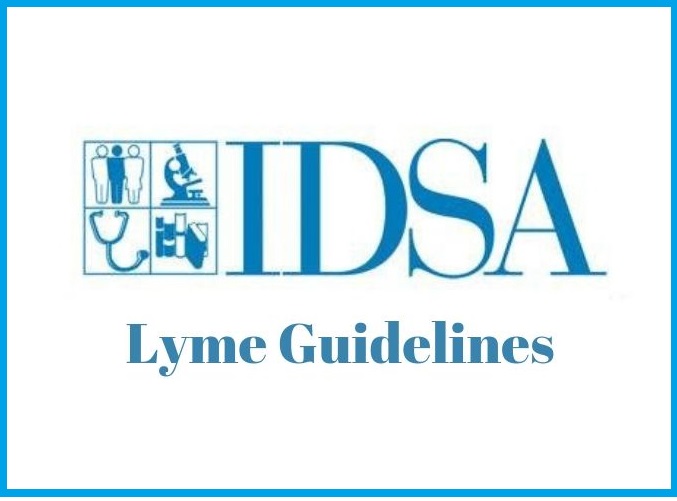TOUCHED BY LYME: IDSA’s insincere request for guidelines feedback

Last month, the IDSA released a long-awaited draft of its latest Lyme treatment guidelines. The accompanying announcement stated: “We are looking for feedback from not only physicians and healthcare professionals, but also individuals affected by Lyme disease, such as patients, care givers, patient organization members, advocates, and researchers.”
Maybe you thought you’d print off the 100-page report and curl up on the couch to read it? Ain’t gonna happen.
How about downloading a PDF and reading it on your Kindle? Heck no.
Why not, you ask? Because the IDSA has purposely made it impossible for anybody to make a copy of either the guidelines or the 200-page list of accompanying resources.
The only way to read any of it is to go to the IDSA website and view it in real time on your screen.
Makes you wonder how serious that request for public feedback actually is, doesn’t it? This cumbersome process makes it difficult for anybody to read such long documents—whether you are a patient, a busy doctor, or a journalist interested in the story.
Wait. We’re not done yet. After you’ve slogged through all that just to read the darn thing, there’s another burdensome procedure for making comments.
Here’s how the IDSA website explains it:
In this form, you are given 20 opportunities to enter your comments on the guideline. Please note that you will need to complete your review in one sitting as your work in progress cannot be saved. Once you hit the “Save and Next” button at the end, your responses will be recorded and saved. If at the end you have additional comments, please click “Enter Additional Comments” and complete the survey again.
For each comment, you must select which section of the guideline your comment relates to:
· General comments on entire draft
· Introduction & methods
· Tick bites prevention and prophylaxis of Lyme disease
· Early localized Lyme disease (erythema migrans)
· Neurologic Lyme disease
· Lyme carditis
· Lyme arthritis
· Prolonged symptoms following treatment of Lyme disease
· Cutaneous manifestations of Eurasian Lyme disease
· Lyme disease coinfections
· Supplement Materials
For each comment, you must be specific (section, page number, line and/or table number, comment).
Any questions marked with an asterisk (*) require an answer in order to progress through the comment form.
You must click “Save and Next” at the bottom of each page or your responses will not be saved.
Complicated enough for you?
LymeDisease.org is currently going over the draft guidelines with a fine-tooth comb and will have comments ready soon. Stay tuned.
Aside from the content of the document itself—which, spoiler alert! is plenty disturbing—the process by which the IDSA arrived at this draft is highly problematic.
Why the guidelines matter
For those who may be new to this party, some background:
The 2006 IDSA Lyme guidelines have long been a point of contention. They rigidly define what is “allowed” to be diagnosed as Lyme disease and limit permissible treatment to a short course of antibiotics. Thus, they deny treatment to the unlucky many who don’t fall within those narrow parameters.
Furthermore, insurance companies often use the guidelines to deny payment for Lyme treatment, and medical boards use them to revoke licenses of physicians who don’t follow them. Currently, the guidelines are also the centerpiece of a federal lawsuit. It charges that the document’s authors and eight insurance companies conspired to deny medical care to Lyme disease patients.
In 2016, the IDSA announced that it would re-evaluate and update the Lyme guidelines. At the time, the group also announced with much fanfare that they had named a “patient representative” on the guidelines panel. When our organization spoke to her, the woman in question admitted that she had no experience with Lyme disease whatsoever!
After the Lyme community protested loudly, the IDSA changed her designation from “patient representative” to “consumer representative.” They also said they would add three “patients” to the panel as well. But “to protect their privacy,” the IDSA refused to name the people who were supposedly there to “represent” us.
So basically, three people we’ve never heard of—and never will hear of—supposedly spoke on behalf of the Lyme community throughout the guidelines process. Are you feeling “represented” yet?
Click here for the draft guidelines.
Click here for: “Patient representation on the revised IDSA Lyme guideline panel: Is it real or token?”
TOUCHED BY LYME is written by Dorothy Kupcha Leland, LymeDisease.org’s Director of Communications. She is co-author of When Your Child Has Lyme Disease: A Parent’s Survival Guide. Contact her at dleland@lymedisease.org.




















We invite you to comment on our Facebook page.
Visit LymeDisease.org Facebook Page